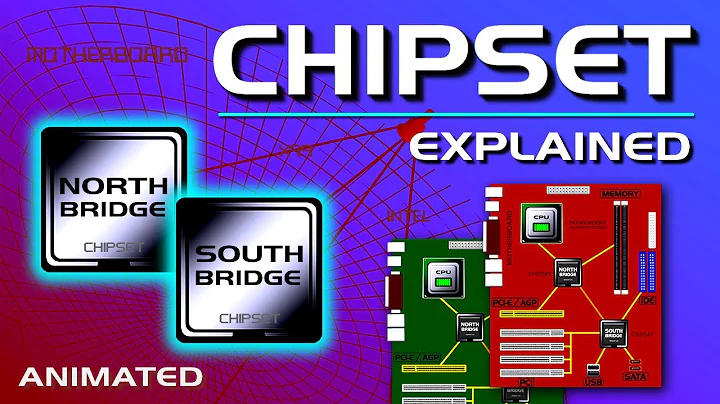What are the north and south bridges of a motherboard?
6,659
Northbridge and Southbridge are two different sections on the motherboard.
- Northbridge is directly connected to the CPU, thus Northbridge supports high-bandwidth devices such as M.2 SSD's, Video cards, and RAM
- Southbridge has to go through Northbridge in order to access the CPU and thus supports the lower-bandwidth devices like SATA drives, PCI slots, USB of all speeds, and your BIOS.
- To find out the Northbridge and Southbridge of your motherboard, contact it's manufacturer.
Related videos on Youtube
Author by
timotree
timotree I love computers, programming, open-source, GNU/Linux, alternative education, and explaining things.
Updated on September 18, 2022Comments
-
timotree over 1 year
I've been looking for open-source BIOS and I found coreboot (not enough rep for a link here); but when I tried to figure out if my motherboard or chipset was supported they only mentioned "northbridge"s and "southbridge"s and didn't mention any chipsets that I recognized.
(At the time of writing this coreboot's wiki is down so you won't be able to use those links)
My questions are:
- What is a "northbridge"?
- What is a "southbridge"?
- How can I find out which "northbridge" and "southbridge" my desktop has?
-
John Keates over 7 yearsRegarding coreboot: it won't work on anything recent. You get core2duo-era hardware support at best. Some newer mobile setups are supported if they match google's hardware (since their chromebooks use coreboot as well)
-
timotree over 7 years@JohnKeates Will it work with ARM chips?
-
John Keates over 7 yearsin theory, yes. The problem is that there is no such thing as an "ARM chip". They are all incompatible and require different BSP's that either need to be reverse engineered or included to work. Using something like uboot or direct image booting is still the preferred way to go. Coreboot was ported to a few ARM-based SoC boards, so you could try it if you have one of those specific boards ( as listed on the coreboot wiki ).
-
timotree over 7 yearsI have clarified it. To say it again: I want to know whether or not my motherboard is supported by coreboot. In order to know that it seems I have to find out which "northbridge" and "southbridge" my motherboard has. What would be the best method of finding out?
-
Derek Weissinger over 7 years@timotree 2 options, Option 1, contact the company of the motherboard's origin and bombard some questions at them and once you get answers, ask the makers of coreboot about your north and south bridge and see if it is compatible. Or you can choose option 2 and take the thermal guards off of the motherboard and try to read the fine print and contact coreboot again.(option 2 will ruin your motherboard if you don't have thermal paste and remover handy. Other than that, unless the wiki recovers I think you might not have a supported motherboard or did something wrong along the way.
-
timotree over 7 yearsSo you're saying I should ask the manufacturer of my motherboard?
-
Derek Weissinger over 7 yearsYes. Yes you should.
-
ganesh over 7 years1) Manufacurer, or 2) Manual, or 3) Boot an OS and do
lspci(BSD's, linux, possible OSX), or start rundevmgmt.mscand look under "System devices" -
timotree over 7 years@Hennes I've done
lspci. What do I look for?





